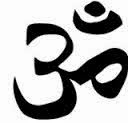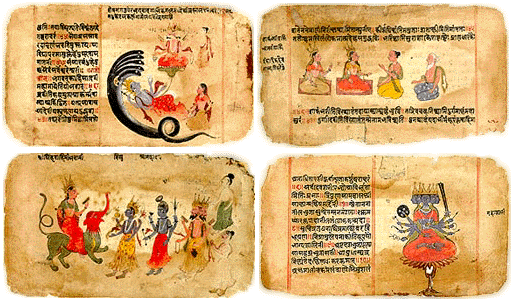 Hinduism is one of the oldest religions in existence, with almost 900 million followers worldwide. Hinduism originated in the Indian subcontinent, and the majority of followers live in India and Nepal. There’s also a smaller group of followers in places such as Bangladesh, Pakistan, Sri Lanka, Great Britan, United States, Indonesia, Fiji, and in few other countries of Middle-East and Africa.
Hinduism is one of the oldest religions in existence, with almost 900 million followers worldwide. Hinduism originated in the Indian subcontinent, and the majority of followers live in India and Nepal. There’s also a smaller group of followers in places such as Bangladesh, Pakistan, Sri Lanka, Great Britan, United States, Indonesia, Fiji, and in few other countries of Middle-East and Africa.
Unlike most other religions, Hinduism wasn’t founded by one individual. It emerged as different philosophical schools came together, and subsequently flourished, amalgamating varied doctrines. Initially, this set of doctrines wasn’t labelled as Hindu, nor was there any religion by the name of ‘Hinduism’.
The term ‘Hindu’ was first used by Persians, as they sought to label the non-Muslims living beyond the river ‘Sindhu’, and mispronounced the word ‘Sindhu’. The religion developed much later. Thus, the concept of ‘Hinduism’ per se is fairly recent even as it’s roots and formation goes back thousands of years. Early Hindu practices simply combined the spiritual practices of the people of Indus Valley civilisation with that of the Aryan invaders from Persia.
 |
| The vedas Source: http://veda.wikidot.com/hinduism |
The Deities and the Holy Texts
There are two main categories of Hindu scriptures: ‘Shruti’, or “what is heard”,and ‘Smriti’ or “which is to be remembered”. ‘Shruti’ texts are usually considered to be more sacred owing to their divine origin. The Vedas and the Upanishads fall into the category of Shruti texts.
The Vedas are the oldest of Hindu scriptures, and were gradually compiled over the centuries through oral tradition. They were written down much later than their date of origin, in Sanskrit.
- The Rigveda, containing hymns, chants and praises to the god to be recited
- The Yajurveda, containing formulas to be recited
- The Samaveda, containing formulas to be sung
- The Atharvaveda, a collection of spells and incantations
Vedas are also the primary scriptures of Hindus, and deeply influence the foundations of the religion.
After Vedas, the Brahmanas were composed,that give the details of the routines to be followed. Afterwards, Aranyakas(Wilderness Texts) were composed that provide the meaning of the rituals.
The Upanishads are Shruti scriptures, written in 700-500 BCE.
The term Upanishad is derived from upa (near), ni (down) and s(h)ad (to sit), i.e., sitting down near. Groups of pupils sit near the teacher to learn about the secret doctrines. Almost all Upanishads are written in the form of dialogues between a student and a teacher.A few of the most important concepts are that of Karma, Samsara, and Moksha.
Karma(Sanskrit, “action”): It refers to the belief that every action has an equal reaction, either immediately or at some point in the future. Virtuous actions, will have good reactions or responses, and sinister actions will have dire consequences.
According to Hinduism, karma operates not only in this lifetime, but across lifetimes; the results of an action might only be experienced after the present life in a new life.Hindus believe that a person can influence the future course of action in life by good or bad deeds, both of which have a corresponding reactions on their later lives.
This process of reincarnation is known as samsara, a continuous cycle of the soul as it as reborn again and again to obtain requital. On the death, it’s believed that the soul doesn’t die. It simply takes on another physical form, any mortal creature.
The ultimate goal is of liberation, self-knowledge and self-realization (Moksha), to make us free from this cycle of action and reaction, and from rebirth.Smriti texts include epics, Puranas, Sutras, Shastras, and Bhakti(devotional) songs.The two most prominent Smriti epics in Hinduism are Mahabharata, and the Ramayana.
Mahabharata(Sanskrit: महाभारतम्, or “Great Epic of the Bharata Dynasty”)
 |
|
| The Mahabharata War Source: http://en.wikipedia.org/wiki/Bhisma_Parva |
Probably the longest epic in history, theMahabharata is an important source of information on the development of Hinduism between 400 BCE-200 CE. It has over ninety-thousand stanzas, and narrates a compelling story of a great war between two groups of cousins, the Kauravas (sons of Dhritarashtra, the descendant of Kuru) and the Pandavas (sons of Pandu). Sage Vyasa is supposed to be the author of this grand story, who also appears in the epic as the grandfather of the Kauravas and Pandavas.
Read the summary of Mahabharata here.
Ramayana (Sanskrit: रामायणम्।)
 |
| a painting depicting scenes from the Ramayana Source: http://www.pbase.com/lovelos/image/54183785 |
Ramayana tells the tale of god Rama, the seventh incarnation of Lord Vishnu, who descended on Earth to trump the perpetrating evil by showing the path of goodness, loyalty and fidelity to people.
In this epic dating back to approximately 350BCE, Rama’s wife, Sita, is abducted by the demon king Ravana, and the subsequent idealistic behavior shown by Rama and Sita, along with other faithful and dutiful minor characters. Thus, this epic epitomizes the virtues to set an example of moral behavior.
To read the summary of Ramayana here.
The Puranas (Sanskrit: पुराण)
It is considered that Vyasa compiled the Puranas at about 300 A.D., and that the Puranas are like the Vedas of the common people.
Hindu Worship
 |
| a puja thali, with diyas, flowers, fruit and incence sticks |
Puja(पूजा) is a prayer ritual in which one of more deities are worshipped.
The Samskaras (Sanskrit: संस्कार saṃskāra) are rites of passage
Saṃsāra or Sangsāra (Sanskrit: संसार) is a cycle of life and death.
In Hinduism, a temple or a mandir is said to be god’s abode, and the loftiest setting for performingpuja. Thus, it’s a special link between the divine and the human. Thus, temples have become the centre of social and religious concerns.
Involvement of maximum senses is a common feature in Hinduism. Thus, from the task of consumption of food to performing a puja, all the senses are required.In a puja, lighted earthen lamps, or diyas evoke the sense of sight, fragrant leaves and flowers evoke the sense of smell, other ritual objects evoke the sense of touch, and consumption of blessed food or prasadaevokes the sense of taste.
- The First Ashrama – Brahmacharya or the celibate student stage
- The Second Ashrama – Grihastha or the householder stage
- The Third Ashrama – Vanaprastha or the hermit Stage
- The Fourth Ashrama – Sannyasa or the wandering Ascetic Stage





